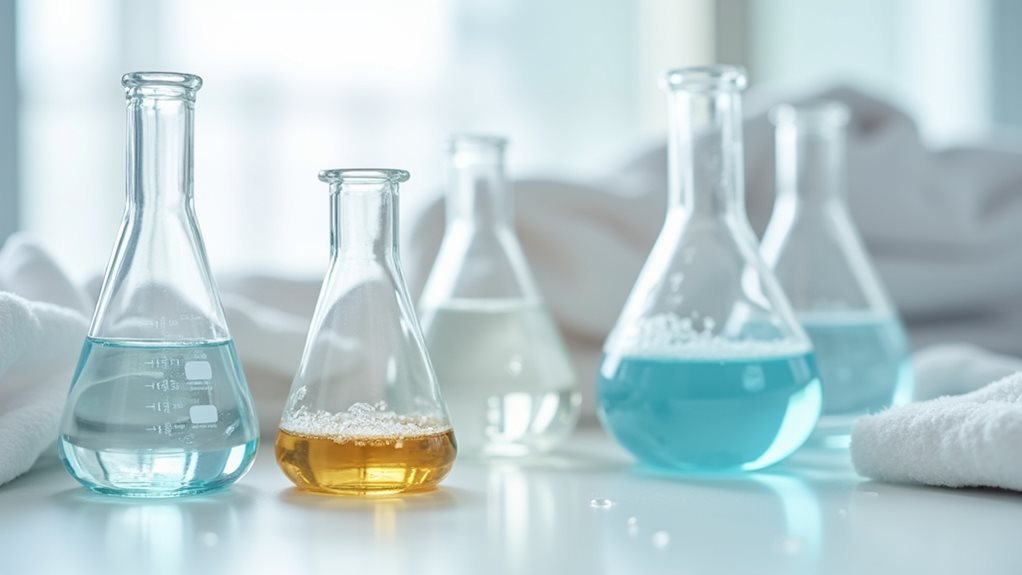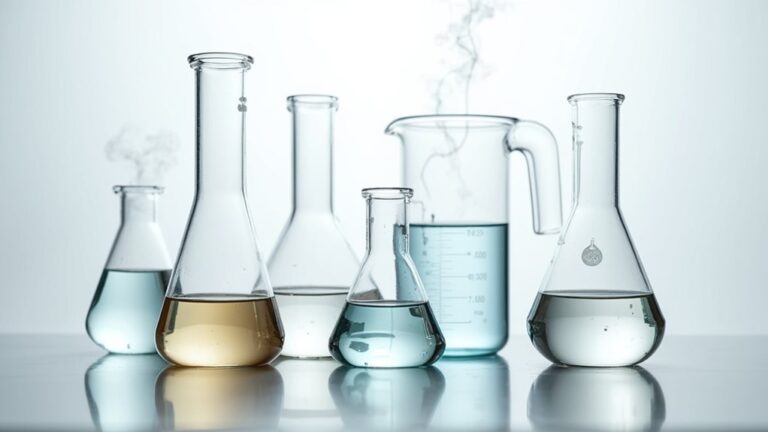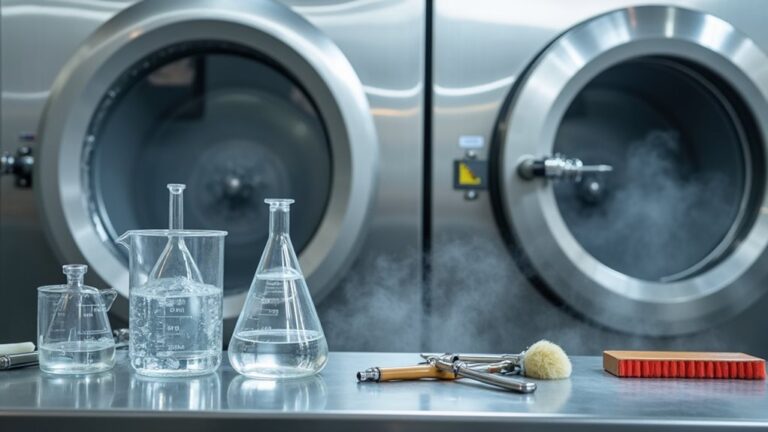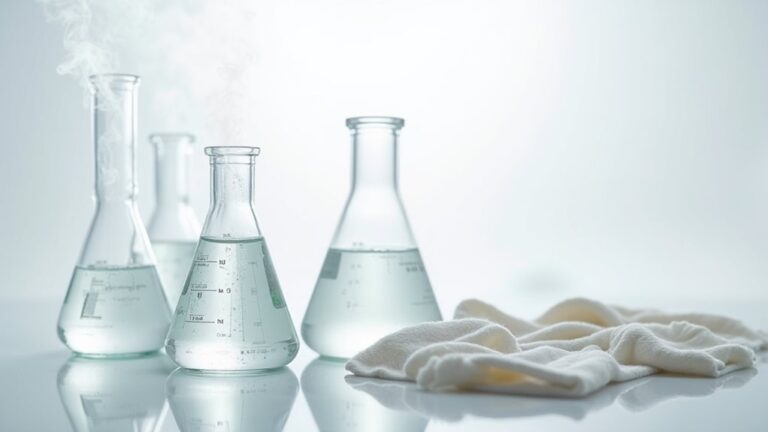Most dry cleaning chemicals, especially perchloroethylene (PERC), aren’t safe and can seriously impact your health through cancer risks, liver damage, and respiratory issues that linger on your freshly cleaned clothes. I learned this the hard way when headaches started appearing after picking up dry cleaning, realizing those “fresh” garments were actually releasing toxic vapors into my home’s air. The good news? Safer alternatives like liquid silicone and wet cleaning methods exist, and discovering them completely transformed how I approach garment care.
Understanding Perchloroethylene (PERC) and Its Health Risks
When I first learned that the chemical used to clean my favorite blazer was classified as a human carcinogen, I’ll admit I felt a bit betrayed by my weekly dry cleaning routine 😅.
Finding out my go-to blazer was cleaned with a carcinogen definitely made me rethink that weekly dry cleaning habit.
PERC, the solvent most dry cleaners use, carries serious health effects that honestly shocked me. The U.S. National Toxicology Program links this human carcinogen to multiple myeloma and non-Hodgkin lymphoma, which aren’t exactly the side effects I expected from maintaining my professional wardrobe.
What’s particularly unsettling is how these toxic chemicals affect you differently depending on exposure levels. Acute exposure might give you headaches and dizziness, while chronic exposure can damage your liver and kidneys.
The environmental contamination aspect bothers me too, knowing PERC vaporizes from clothing and contaminates indoor air repeatedly.
These PERC residues can remain on freshly dry cleaned garments, especially when clothes haven’t been properly aired out before you bring them home.
Environmental Impact of Traditional Dry Cleaning Solvents
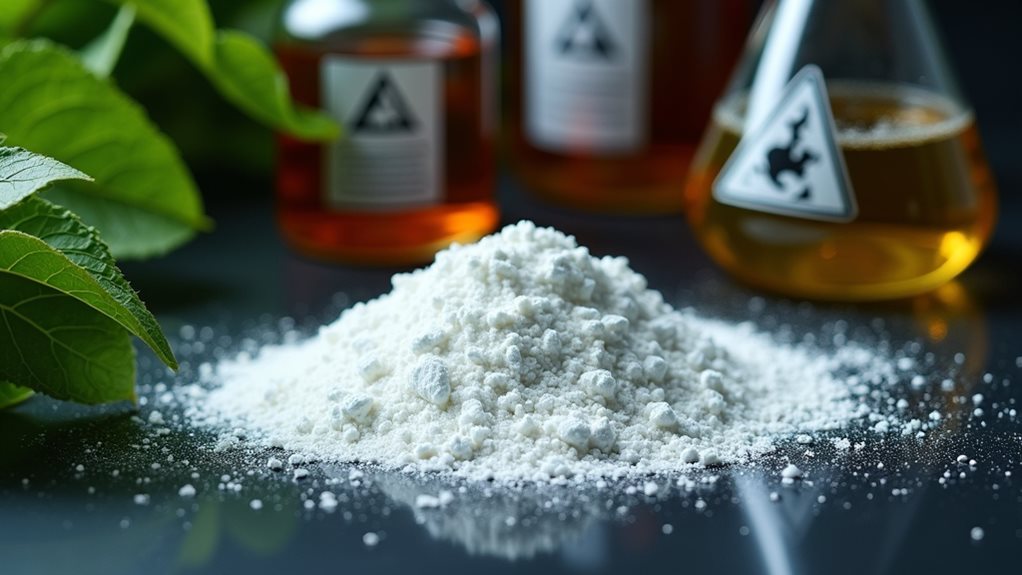
Although discovering PERC’s health risks was alarming enough, learning about its environmental devastation made me realize I’d been unknowingly contributing to a much larger problem every time I dropped off my clothes.
These dry cleaning chemicals don’t just disappear after use—they persist in our environment for weeks, creating widespread damage that affects everyone.
Here’s what perchloroethylene and other traditional solvents like n-propyl bromide actually do to our planet:
- Air pollution that lingers – Toxic chemicals escape ventilation systems, contaminating outdoor air and accelerating ozone layer depletion.
- Groundwater contamination – Leaks poison soil and threaten drinking water safety for entire communities.
- Ecosystem destruction – Marine life suffers from chemical persistence, while plant recovery becomes painfully slow.
The energy-intensive process also contributes significantly to carbon emissions, adding another layer of environmental concern to traditional dry cleaning operations.
Understanding these environmental impacts helped me prioritize safer alternatives for my family’s clothing care.
Chemical Residue on Clothing and Household Exposure

Even after learning about PERC’s environmental damage, I naively assumed that once my clothes came back from the dry cleaner, the chemical nightmare was over—but discovering that toxic residues actually cling to fabrics and follow you home was like realizing I’d been unknowingly inviting a dangerous houseguest into my family’s daily life.
Chemical residue from perchloroethylene doesn’t magically disappear when you pick up your dry cleaned clothing, and these cancer-causing chemicals create serious health risks through indoor air pollution and inhalation exposure.
The toxic chemicals in your freshly dry cleaned clothes don’t vanish—they continue releasing dangerous vapors directly into your home’s air.
Each cleaning cycle increases residue concentration, while storing clothes in cars or closets amplifies vapor buildup, making long-term exposure inevitable.
Environmental protection starts with choosing alternatives to perc whenever possible. 🏠
The risks are particularly concerning for vulnerable populations, as pregnant women and children face heightened dangers from repeated exposure to these toxic chemical vapors.
Safer Alternatives to Toxic Dry Cleaning Methods

While discovering the toxic reality of traditional dry cleaning felt overwhelming at first, I’m relieved to share that safer alternatives do exist, and finding them has become much easier as more eco-conscious cleaners recognize consumer demand for healthier options.
You don’t have to sacrifice quality clothing care to avoid toxic chemicals anymore, and these dry cleaning services are genuinely effective.
Here are three game-changing eco-friendly methods I’ve discovered:
- Liquid silicone (D5) – This non-toxic, biodegradable solution cleans beautifully without damaging colors or leaving harmful residues.
- Wet cleaning – Uses mild detergents with computer-controlled processes, drastically reducing chemical exposure.
- Liquid carbon dioxide cleaning – Employs pressurized CO2 as a gentle solvent with minimal environmental impact.
When choosing lower toxicity chemical solvents, always ask your cleaner about their methods to guarantee environmental safety.
For delicate fabrics and regular garment maintenance, you can also explore at-home solutions like steam cleaning, which uses high-temperature water vapor to effectively remove dirt and odors without any chemicals.
How to Choose Eco-Friendly Dry Cleaning Services

How do you actually find these eco-friendly dry cleaners in your neighborhood, especially when most places still display those familiar “dry cleaning” signs without mentioning their methods?
Start by asking the right questions – inquire about their solvents and whether they use harmful chemicals like perchloroethylene. You’ll want cleaners utilizing liquid silicone or wet cleaning methods, which are non-toxic and biodegradable alternatives that won’t leave chemical residues on your clothes.
Some progressive cleaners are even adopting supercritical CO2 technology, which uses pressurized carbon dioxide as a completely non-toxic cleaning solvent that’s both effective and environmentally safe.
I’ve discovered that organic dry cleaners often advertise their sustainable practices online, making comparison shopping easier when you enter your zip code for local options. Many offer convenient delivery services too!

